Monetization Strategies for Fintech Apps: What Works Best?
24 May 23 

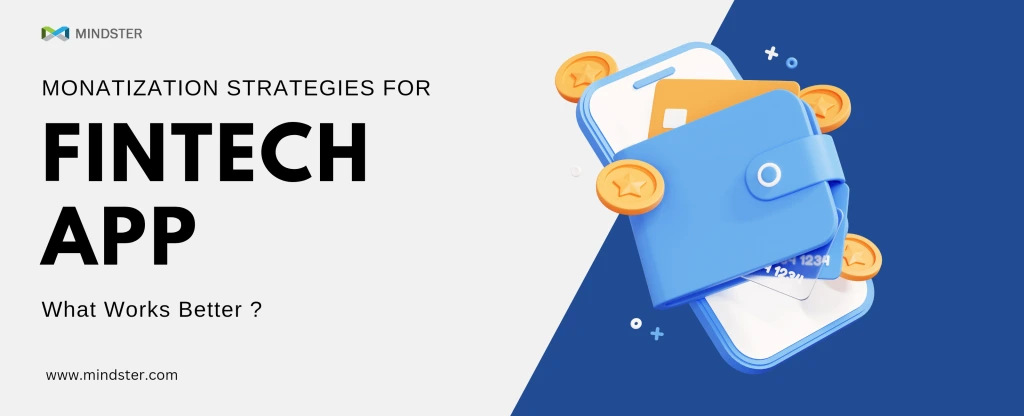
Companies that develop fintech app have experienced a rapid increase in the past few decades globally. Market Screener estimates that the worldwide financial business will be worth US $26.5 trillion in 2022, growing at a six percent annual pace.
So it shouldn’t come as unexpected news to anyone eager to understand how to create monetization plans in the rapidly developing field of technologically adept mobile banking.
However, the issue of how companies adopt monetization strategies in the fintech sector still exists.
What are Fintech Apps?
Fintech combines the words “finance” with “technology.” It describes any company that uses technological advancements to create, automate, or enhance financial services and procedures.
Mobile internet access is used in fintech to increase the simplicity and effectiveness of digital payments. Consumers are increasingly managing their accounts on tablets and smartphones.
As a result, they can accomplish more, have a better experience, and expedite these operations with fintech apps.
Fintech app development is rapidly gaining popularity on a global basis. The financial sector is now being driven by digital innovation at a never-before-seen pace thanks to the rising use of mobile phones.
What is a Monetization Strategy?
An objective of a monetization strategy is to increase money through your website, viewers, content, or other channels. There are numerous monetization techniques.
The most typical ones involve in-app purchases, selling ad space, providing platform availability, and many more.
Great monetization tactics continuously change in response to the organization’s objectives and are likewise dynamic. Additionally, they have to be adaptable enough to grow and change as time, the industry and customers demand.
Monetization Strategies for Fintech Apps
You must consider your fintech app’s intended market when choosing a monetization strategy. Although some users are prepared to pay for paid apps, there are other situations where it’s necessary to use in-app marketing or different strategies to make revenue.
Any fintech application monetization approach that you choose to use will require an initial cost that you must take into account.
This entails considering any necessary financial expenditure and the time and effort needed to implement it. In general, you want a monetization plan that offers an acceptable return on your investment.
For independent contractors and those working in the gig economy, ensuring correct tax obligations can significantly affect their net earnable income. One critical aspect of managing finances for these workers is accurately estimating 1099 taxes, as miscalculations can lead to unexpected financial burdens. This connection between fintech app monetization and taxation highlights a platform’s potential role in providing valuable resources, aiding freelancers and self-employed individuals in efficiently planning for their tax liabilities while simultaneously focusing on business growth.
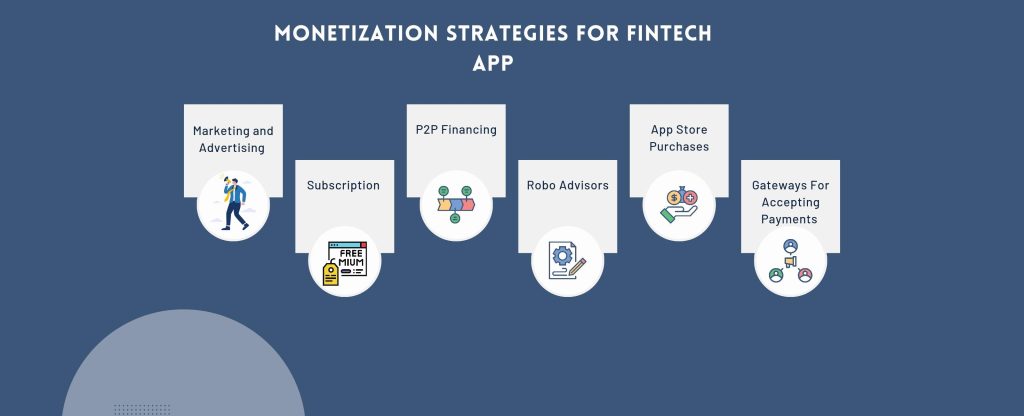
- Marketing or Advertising
The most popular and straightforward method of making money from fintech apps is by including advertisements. Third-party ad networks pay app developers to show their advertising. Additionally, you might get paid each time your visitors visit.
You can partner with loan companies, trading companies, financial consultants, etc., to market their products and solutions via your mobile application.
Consider banner ads and rich media as additional approaches to monetizing fintech apps.
On the main screen of the app, banner ads can be shown. In addition, they can be shown in various sizes and locations (top or bottom) on the monitor.
Rich media are dynamic advertisements that keep visitors interested for an extended period, extending the session.
Rich media advertisements may include minigames, videos, text, photos, audio, etc. It is a clever strategy for running the ads without degrading the user experience.
- Subscriptions
This constitutes one of the best methods for making money from fintech applications. Give users a free trial period of one month to utilize your app.
They must pay after a month if they still want to use your software. After that, they undoubtedly subscribe to your app if they feel comfortable using it.
It is the safest method of earning money. There is no requirement for integration with third parties or per cent planning because subscriptions can be adjusted to flat pricing.
It’s a straightforward technique to bring in money for your financing company.
- Peer-to-Peer Financing
The idea behind the fintech app is that someone can borrow money from another person using it. It removes all middlemen and banking layers.
Using this system, a person may give funds to other people and receive profits. Financial service companies might charge nothing for arranging the link, which is their main advantage.
As a result, it provides additional revenue for the banking sector.
The lender finds this much simpler and easier than navigating a difficult process at banking institutions. Peer lending also eliminates documentation.
- Robo-Advisors
Robo-advisors are a well-respected type of trading-based revenue-generating tool. Human economic counselors are replaced by it.
Users frequently seek the assistance of financial consultants for improved handling of money. Automatic and algorithm-driven financial services are offered by robo-advisers with minimal or no human involvement.
It is advantageous to both customers and app owners. Compared to traditional consultants, app owners need fewer fees to turn revenue.
Services are available for less money to users. Robo-advisors also dedicate, control, and optimize the client’s resources autonomously.
Furthermore, the app is always accessible to users, which is convenient for them. Therefore, you can use this cutting-edge monetization strategy for fintech app development.
- App Store Purchases
The majority of fintech apps may be downloaded for free. However, in-app purchases are how many of them profit. By using this business strategy, you can increase your revenue by selling what you sell directly to clients.
If you decide to use in-app purchases for your app, continue playing with the various possibilities and figure out which suits you the most.
Later, you can establish your company’s approach by concentrating on in-app purchases with a significant impact.
- Gateways for Accepting Payments
Payment gateways allow customers to purchase items or services digitally from a merchant’s website. Cryptocurrencies, digital wallets, debit and credit cards, and debit cards are just a few of today’s numerous payment options.
Banks sometimes charge hefty fees on payments completed through any of these options.
Even still, fintech companies are fusing all of these ways of payment into simple apps that internet retailers can reasonably afford and include in their online stores.
In addition, businesses that offer clients actual items or solutions use these payment apps.
Final Thoughts
The fintech app market is becoming increasingly competitive. Understanding the user base, however, is the most crucial component of any fintech app monetization plan.
Additionally, you must make certain the approach you use fits their behaviors. If you succeed in doing this, success will undoubtedly follow.
How Mindster Accompany in Fintech App Development?
Considering client needs and researching industry trends has helped Mindster design various fintech apps.
In addition to the design, we worked very hard on the fintech application’s user interface and user experience to ensure users could quickly navigate through it.
Our fintech app development allows people to digitally connect with mobile wallets, online payments, remittance apps, P2P transfers, and e-KYC services integration.
Do follow us at www.mindster.com
- Agentic AI1
- Android Development3
- Artificial Intelligence33
- Classified App3
- Custom App Development5
- Digital Transformation12
- Doctor Appointment Booking App14
- Dropshipping1
- Ecommerce Apps40
- Education Apps2
- Fintech-Apps37
- Fitness App4
- Flutter4
- Flutter Apps20
- Food Delivery App5
- Grocery App Development1
- Grocery Apps3
- Health Care10
- IoT2
- Loyalty Programs9
- Matrimony Apps1
- Microsoft1
- Mobile App Maintenance2
- Mobile Apps128
- Product Engineering6
- Progressive Web Apps1
- React Native Apps2
- Saas Application2
- Shopify9
- Software Development3
- Taxi Booking Apps7
- Truck Booking App5
- UI UX Design8
- Uncategorized6
- Web App Development1










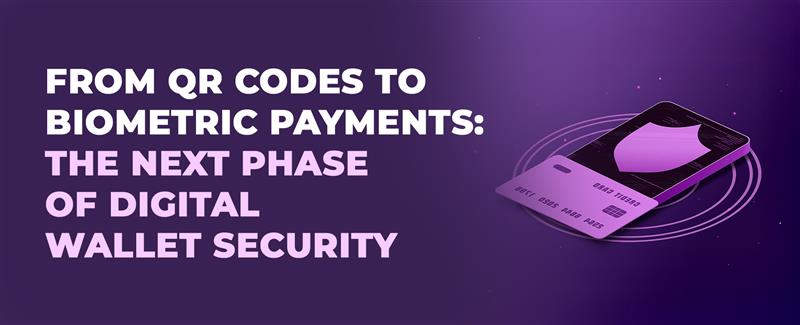
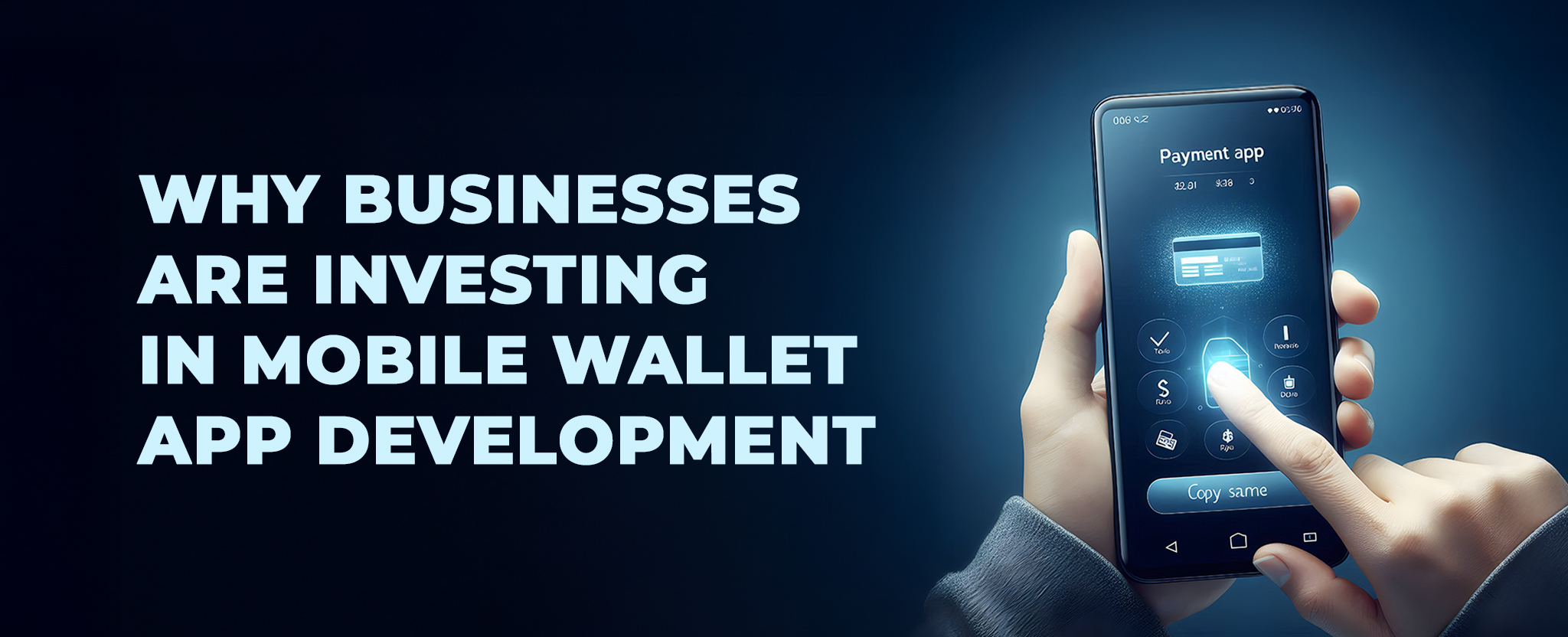
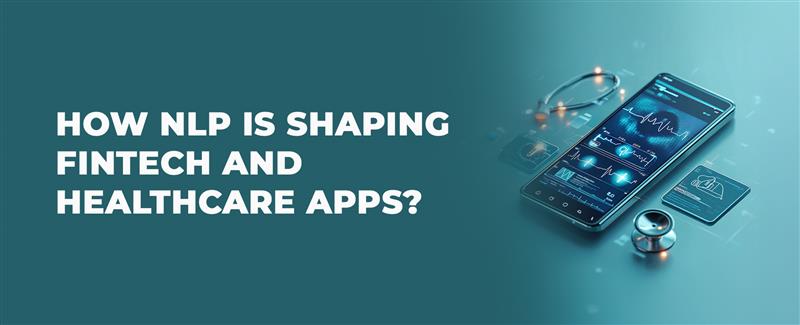






Comments